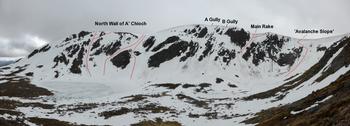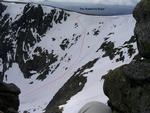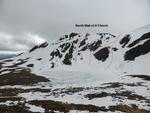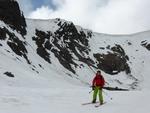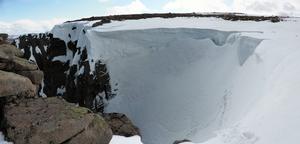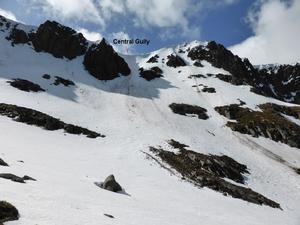Possibly the most beautiful of the Beinn a'Bhuird corries, there is some skiing possible in the right conditions. The most obvious features are the headwall of the corrie, known as the 'Avalanche Slope', and the Main Rake to its left (when viewing it from the corrie floor), but there are many other lines possible. The North face of the ridge that leads out to A' Chioch offers some steep lines often without the cornice problems found elsewhere in the corrie.
Approach:
As with the other corries, either the Glen Quoich or Glen Slugain approaches are best, particularly with the use of bikes. If using the Glen Quoich approach, and you want to return without walking round the hill, you can ascend the ridge onto A' Chioch. From there, you can head down the Allt an t-Sneachda, which holds snow well (the clue is in the name!). Alternatively, the most direct way is over the South Top (may be scoured and involve some walking), and aim for the steep stream line that descends just to the West of Bruach Mhor. If you've approached from Glen Quoich, you will have seen this line, as despite being low down the mountain, it holds snow well in lean conditions.
Other possibilities:
A Gully and B Gully (both Grade I) on the South side of the corrie also look possible, and would give the greatest vertical in the corrie, but they are difficult to locate from above as they are often heavily corniced. Both are fairly shallow, indistinct looking lines.
Relevant Weather Forecasts

